Have you ever listened to a grandparent talk about living through hard times and think maybe it’s time to learn more about self-sufficient living—just in case?
Or perhaps you’ve always had a desire to add more practical skills to your repertoire and build or grow or make things yourself.
Whatever the motive, there are many reasons that each of us should learn how to become more self-sufficient in life.
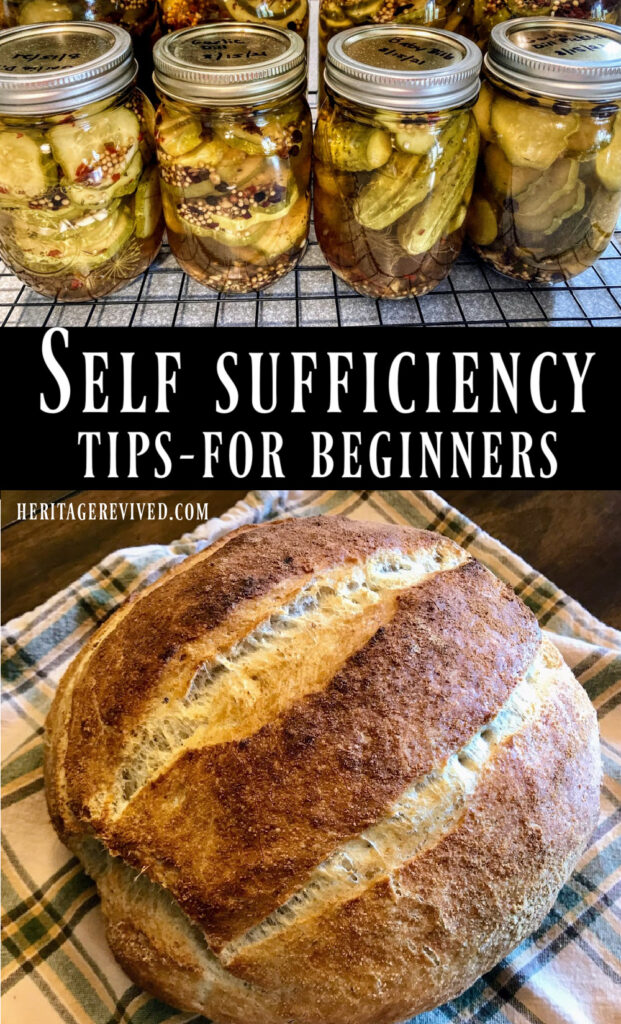
This site contains affiliate links to products. As an Amazon associate, I earn from qualifying purchases. Please read my disclosure for more info.
The benefits of a (more) self-sufficient life
For starters, self-sufficiency creates a more sustainable life and can help you save money in the long run.
There’s less waste, fewer trips to the grocery store, and less reliance on Amazon and other outside sources for necessities.
Make it at home and your home won’t make you leave to get what you need.
Self-sufficiency also complements a healthier lifestyle. Think chemical-, pesticide-, and hormone-free vegetables, herbs, and meat.
And since these wonderful foods all require some effort to raise and harvest, your body benefits not only from fresh, nutritious food, but also from meaningful exercise, time spent absorbing Vitamin D outside –
-and the immense sense of satisfaction that comes from reaping the fruits of your labor.
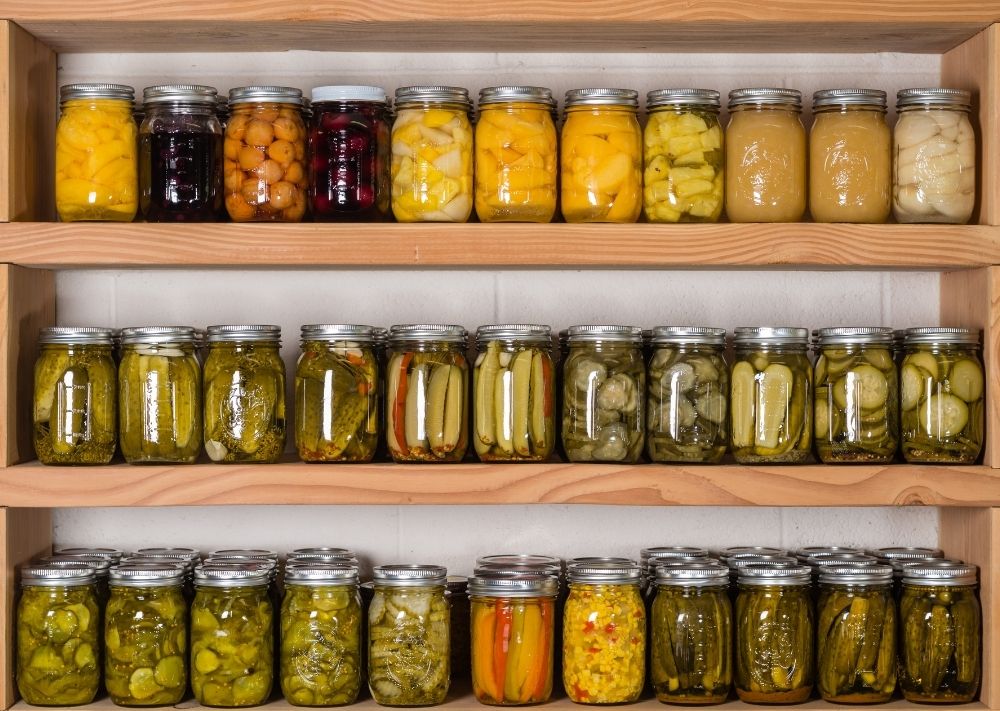
Filling your pantry with homegrown food can build self sufficiency.
Finally, many self-sufficient practices are age-old traditions and skills worth passing on to the next generation.
Read next: Is Simple Living Possible? Realistic Tips.
Practical knowledge is key
Perhaps I’m the only one who thinks it’s sad that things like knitting and knife-making seem to be dying a slow death.
But a smart-electronic world that now seems dependent on convenience and technological savvy might someday appreciate the revival of more practical skills when the robots and microchips fail.
While you may not have the ability to drop everything and start an off-the-grid farm, why not examine a few areas of your home that can use a “self-sufficient make-over”?
Here some ways to become more self-sufficient in those areas—starting today.
Self-sufficient Kitchen
Get into gardening.
A garden is the most obvious grocery-saver. Even tiny gardens can yield a mind-blowing amount of produce.

If you don’t have much ground to work with, you may want to consider raised bed gardening.
Volunteer for veggies.
If you want garden veggies but have zero ground to work with, find a community garden in your area.
As a college student, I lived in a small apartment, but was able to save money and bring home loads of organic produce in exchange for a few hours of weeding per week.
Grow container herbs.
Don’t have the time or space for any form of outdoor gardening? Try growing some herbs.

You can start with container herbs year around.
Seeds, dirt, containers, and sunlight are all that’s required. There are several herbs that you can grow inside in any season, including basil, chives, and rosemary.
Once they’re mature, you can use them both fresh and dried—and they smell so good!
Support your local farmer.
CSAs (community supported agricultures) are another way to acquire local produce in bulk, and they don’t require working with dirt.

Shop local.
In addition to seasonal veggies, the weekly shares usually offer other local food items, such as fruit, honey, and eggs, as well.
You can also check with local farmers/ranchers for bulk meat sales. And if half a cow or pig feels like too much, perhaps a friend would split it with you.
Raise animals yourself.
It may seem like a stretch if you didn’t grow up on a farm; but if you have the outside space, raising livestock for meat, milk, or eggs is a rewarding experience.

Until they’re ready for butchering, the livestock can help earn their keep by taking care of food scraps and producing fertilizer.
Animal husbandry is also an excellent learning experience for the whole family.
Go hunting.
Hunting is my personal favorite way to acquire protein.
While it is not for everyone, those who have an affinity for the mountains and a desire to actively participate in wildlife management and conservation find hunting to be both challenging and gratifying.
Wild game meat also happens to be extremely lean and nutritious.

If you think you’d like to start hunting, here’s a helpful guide for beginners.
Go fishing.
Like hunting, fishing also affords the opportunity to get outside while acquiring some protein.
One caveat: it can be quite addicting!
Pick berries.
Berries are an enjoyable and economical choice of fruit to stockpile as they can be eaten fresh, frozen, or as a preserve.
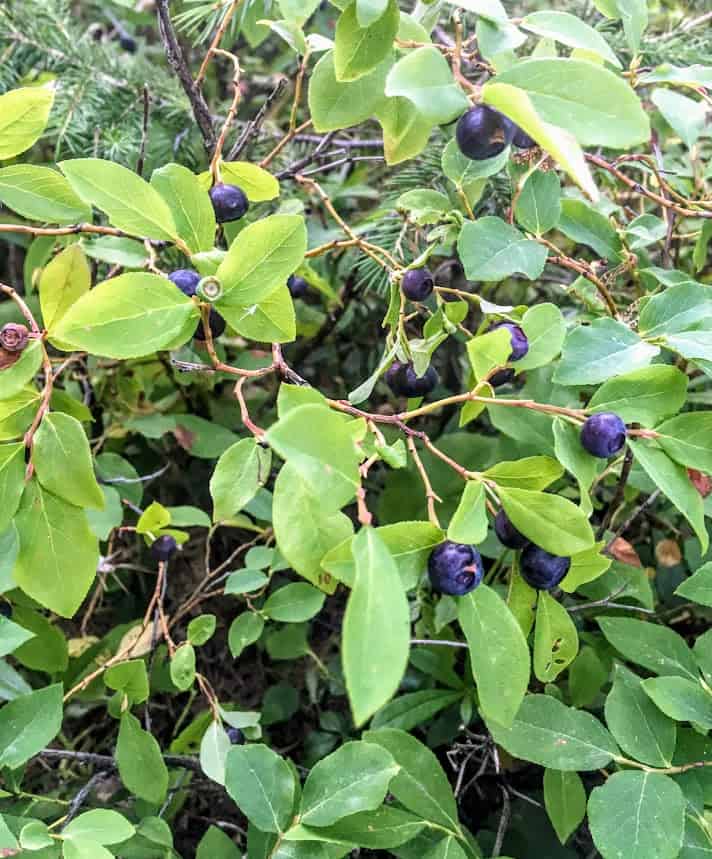
Huckleberries, wild blueberries, thimbleberries, salmonberries, elderberries and blackberries are free for the picking in the wild, depending on where you live, though certain areas may require a permit.
Rural areas often have berry farms that offer bulk picking options, as well.
Do some canning.
Our foremothers made their garden produce last all year by canning and you can, too.
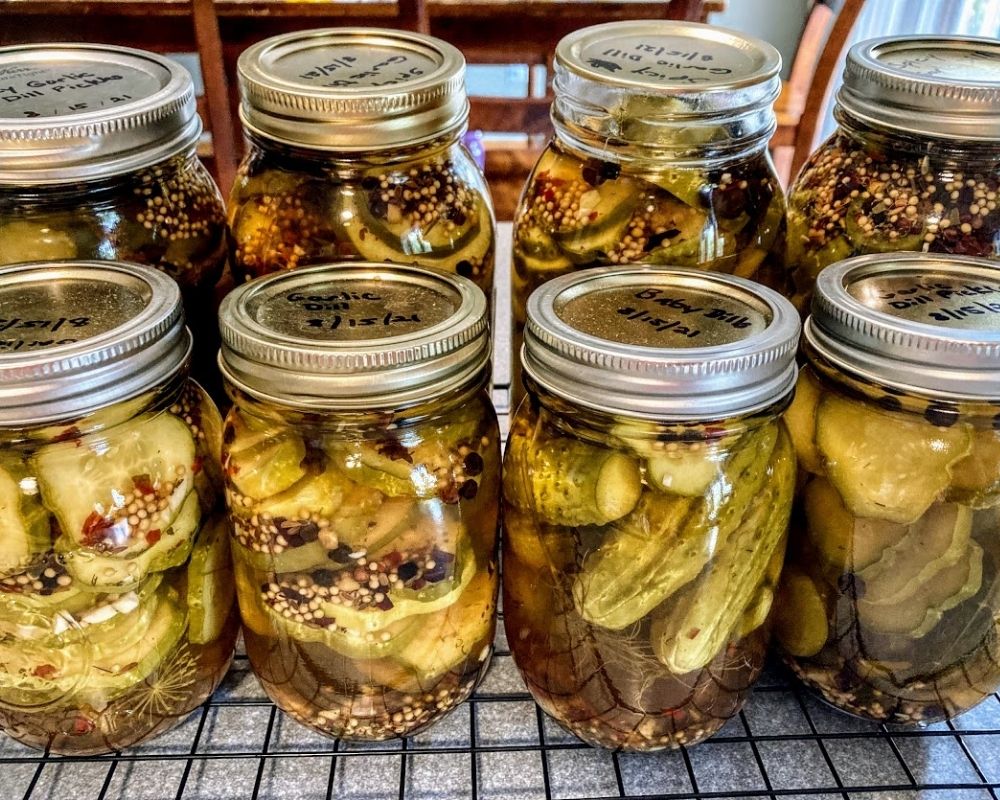
There are many step-by-step tutorials, books, as well as convenient accessory starter kits, if you’re new to the method.
Although it can be a lot of work to can large batches of produce, having a cellar or pantry stocked with those beautiful jars can save you time and money at the store later on—plus, those jars and rings can be reused!
Self-sufficient medicine cabinet
Familiarize yourself with fermentation.
Skip buying probiotics from the store and stir up some good bacteria yourself by fermenting.
While yogurt is often the go-to fermented food and is certainly delicious, there are other options to dive into as well, such as sauerkraut, kefir, sourdough, vinegar, kombucha, and kimchi.

Find a friend who has some starter or scobies to share, or start a batch yourself and you’re on your way.
Keep some bees.
This one requires a bit of initial investment, but the return is liquid gold—gold that can calm coughs, sooth sore throats, relieve allergies, and aid indigestion.
In addition, raw honey is useful as a healthy alternative to processed sugar and as a topical healing balm.
Gather flowers.
Flowers such as echinacea, roses, and dandelions contain healing properties within their petals, stems, or roots and are easy to consume as tea.
Rose hips, for instance, are very high in vitamin C, while echinacea is an effective immune system booster. A lovely flower garden can easily double as a natural pharmacy—just keep the dandelions separate.

Be sure to use pesticide-free seeds and starter plants.
Read next: DIY Chamomile Bath Salts Recipe
Buy an aloe plant.
Aloe vera is well-known for its skin-soothing properties, but it can also sooth sore gums and upset stomachs.
The best part about aloe, however, is that it’s a plant that’s an easy keeper.
Read next: DIY Aloe Vera Salve recipe
Cook up some bone broth.
If you use bone-in meats, save those bones to make bone broth.

It’s a nutrient-dense food that supports a healthy gut and also supplies collagen for strong hair and nails. A mix of knuckle bones and small meatier ones work best, but almost any kind can be used.
Make your own tonic.
There are many recipes online for “supertonics”, but my favorites—and the ones that seem most effective against nasty bugs—use horse radish, garlic, apple cider vinegar, and ginger root.
Elderberry syrup can be easily made with either fresh or dried elderberries and is good to have on hand for both prevention and immune support.
*Know your herbs before ingesting and discuss them with your healthcare provider if you are pregnant, nursing, or taking medications.
Read next: DIY Herbal Muscle Rub Recipe
Self-sufficient Closet
Start sewing.
Whether you go all out with a sewing machine and patterns or keep it needle-and-thread simple, knowing how to sew can save you money on alterations and fixes that might otherwise have you throwing your clothes out altogether.
Take up crocheting or knitting.
Knitting and crocheting are relaxing ways to pass time (or multi-task while watching a movie).

Learn a new DIY skill.
From scarves to sweaters, there are so many fun things to make.
Make use of the clothes you have.
Limit new clothing purchases to quality pieces that can serve more than one purpose, and make use of what you already have.
A solid shirt and jeans can be easily dressed up with a scarf or jewelry, for example, and a summer dress can double as fun fall attire when paired with leggings, boots, and a cardigan.
Also—who needs nightgowns when you can steal your husband’s t-shirts?
Repurpose old clothes.
We all have them—shirts or pants that have been around since college, but are too special to toss.
Instead of wearing them out further (if they even still fit), why not fashion them into a pillow case or cloth napkins, turn them into doll clothes for your daughter, or piece together for a quilt?
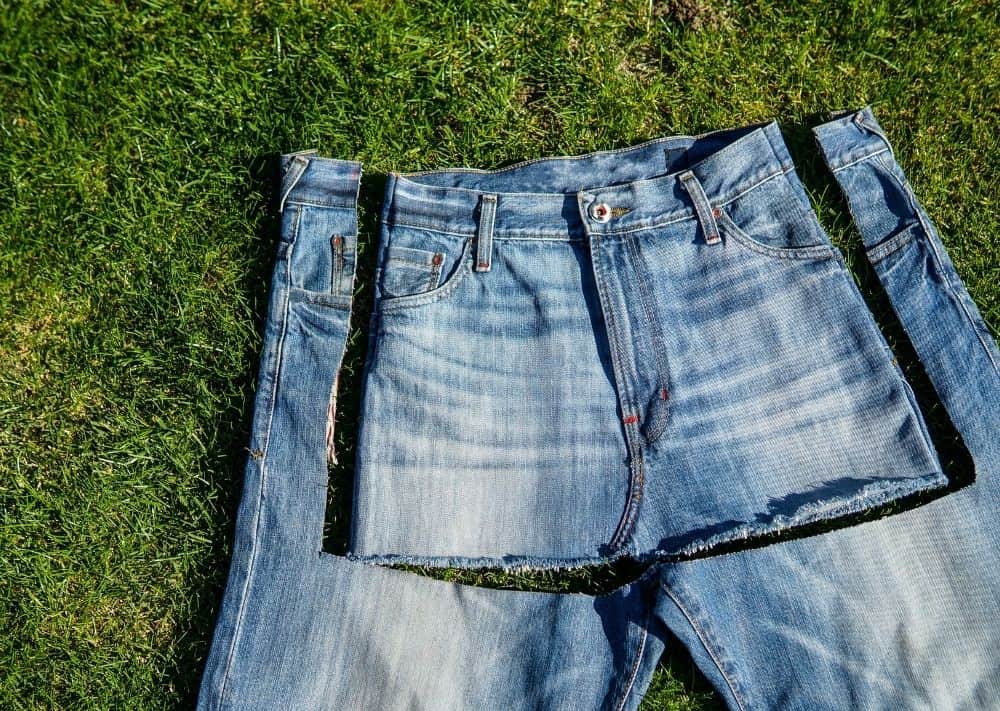
Transform outgrown clothing into something new.
As for ancient clothes that hold no sentimental value, the rag bag can always use replenishing.
Consign.
Bored with the clothes you have? Trade them in at a consignment store.
Stores generally accept garments that are in excellent condition and somewhat trendy, so keep that in mind as you care for your clothes and make new clothing purchases if you hope to consign regularly.
Self-sufficient Yard
Compost.
Save room in your trash can and recycle your food scraps by turning them into compost for your yard, garden, or flower beds.
Use an old plastic container, or buy a compost bin that helps prevent odors from leaching out.

Composting = free, nutritious garden dirt!
Make mulch.
Repurpose grass clippings, old straw, and dried leaves broken down by a lawnmower or electric leaf shredder to make mulch.
Add some compost for a richer mix.
Save seeds.
Are you loving those flowers you planted and want to plant more next year?
Think ahead and harvest and dry the seeds for more beauty next year.
Remake your space.
Even the smallest areas can be reworked into a self-sufficient space.
Think creatively—and with any HOA rules you may have—to see how you could incorporate a garden, window planters, flower beds, a chicken run, fruit trees, etc.
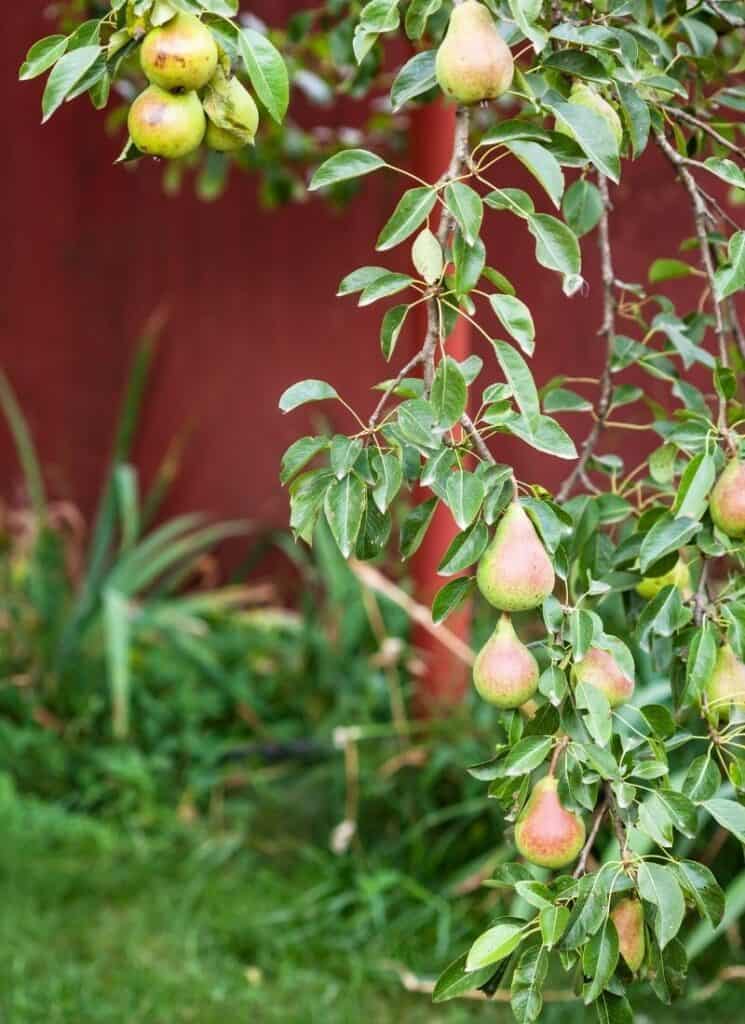
Fruit trees are well worth the investment.
Self-sufficient hygiene and household
Use household items you already have, such as baking soda, sugar, or vinegar, and add a few essential oils or special ingredients like glycerin or cocoa butter to make your own
- cleaning products
- facial scrubs
- lotion
- soap
- toothpaste
- lip balm
- moisturizer
- beard oil
- hand sanitizer
- nail polish remover
Final word on the self sufficient quest
One final suggestion for your journey toward a more self-sufficient lifestyle: Give your bookshelf a makeover.
While becoming more self-sufficient and creating a sustainable home does require some know-how, achieving that knowledge can be as easy as picking up a book—on gardening, hunting, foraging, or any of the other ideas above—and you can start reading today.
One book in particular that I found helpful is A Thrifty Good Life, in which author Sarah Sailer depicts how a health crisis drove their family to create a more holistic lifestyle and convert their backyard to a tiny but thriving urban farm.
She also shares homesteading tips, recipes, and inspirational reflections.
Of course, there are many other books and resources available, including people you know.
Whether you are already quite self-sufficient or don’t know quite where to begin, do a little research and go with the ideas that feel good to you.
It can be something as simple as buying a packet of seeds or developing a mindset that ponders what can be reused, remade, or rethought.
Remember: even baby steps can start a journey. You’ll be surprised how learning one new self-sufficiency skill can lead to so many more.
You might also like:
Manual appliances you should own on the homestead